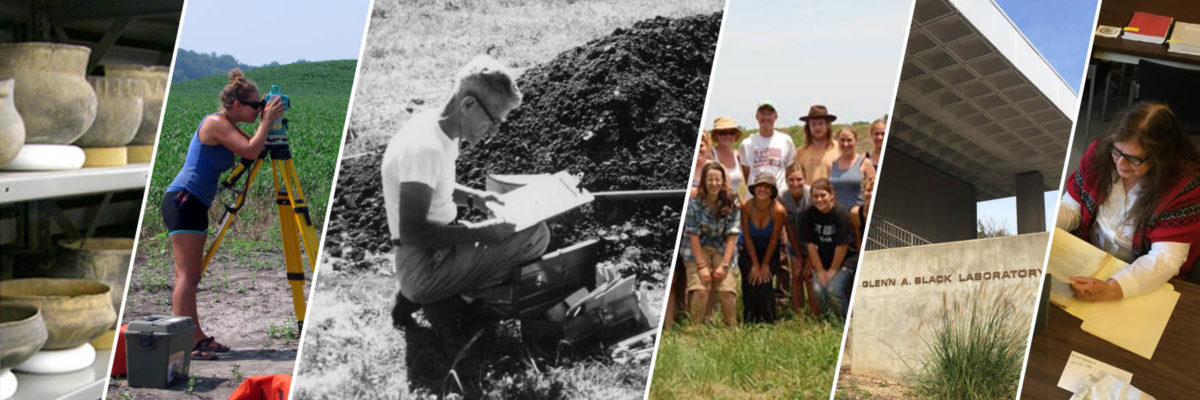October 9, 2017
by Hannah Rea, Social Media Intern
The DeVault Gallery of the Mathers Museum was packed full as students and community members gathered to hear a panel discussion on sovereignty and identity as part of Themester 2017.
“Negotiating Homelands and Sovereignty in Indiana Territory,” hosted by the Glenn Black Lab, featured a discussion moderated by Heather Williams, Program Assistant for the FNECC, and commentary by the panelists: George Ironstrack, Assistant Director of the Myaamia Center at Miami University; Stephen Warren, Professor of History at the University of Iowa; and Holly Cusack-McVeigh, Professor of Anthropology and Museum Studies at IUPUI.
Each panelist addressed a central question: How have Native Americans continued to be outsiders in their own land?
Cusack-McVeigh spoke first, using her experience with a water quality project in Alaska to examine how different backgrounds can affect our perspectives. She focused on the theme of place: the western view of place is that of inanimate land, whereas the Yup’ik Eskimos, with whom she had worked, viewed the land as a “revered ancestor.” She explained that issues facing indigenous peoples are more than just tangible losses, but of cultural and spiritual losses.
Ironstrack spoke next, drawing on his time with the Myaamia Center, a department hosted by the Miami of Oklahoma at Miami University of Ohio. He focused on the theme of otherness; following the forced relocation of Myaamia from their homes in Indiana to Kansas and, after the Civil War, to Oklahoma, a division was created within the tribe. Those who had stayed behind in Indiana were isolated and, still to this day, cannot on their own qualify as a federally recognized tribe. He concluded that it’s more than just a spatial problem; the Myaamia in Indiana lack the basis for legal and political sovereignty, and with it the rights and connection to others with whom they identify as out-of-state kin.
The final speaker was Warren, who used his experience as a non-Native to address issues that face indigenous peoples today. He spoke on the theme of appropriation, brought about especially in the Midwest by repeated attempts at ethnic cleansing of those native to the territory. Appropriation is the adoption of American Indian culture by non-natives. One of the most destructive trends in Ohio is the repeated desecration of graves by amateur archaeologists, taking advantage of laws allowing the excavation of cemeteries, and by private land owners who choose to destroy burial mounds on their land for fear of reduced property value. He warned that this destruction and the trend of appropriation will continue until it is recognized as the serious threat that it is.
After a brief Q&A session, the crowd went to the GBL for the opening of the new exhibit, “Mapping Indiana Territory: Exploring Indigenous and Western Representations,” a display of maps from the Indiana territory through the years. The exhibit is also accessible online.
Thanks to our panelists for a great discussion, and to the Mathers Museum for having us!
Did you miss the talk? Watch it on our Facebook.


